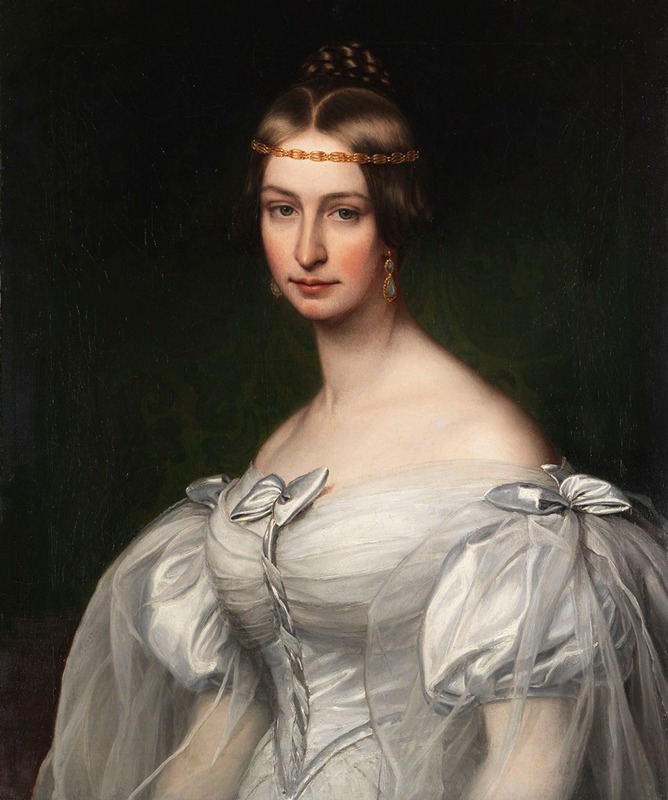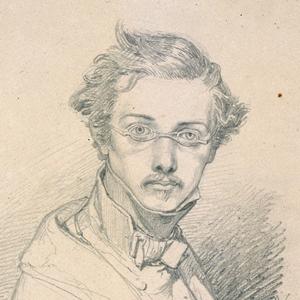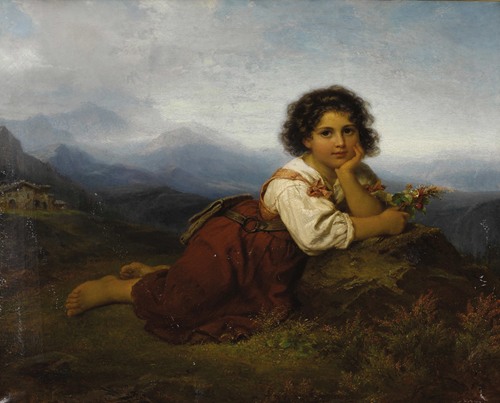

Friedrich Dürck was a German portrait and genre painter.
He was the son of a wealthy merchant who lost his fortune in the post-Napoleonic turmoil due to bad speculation and was finally happy to find work as an inspector of the royal hunting lodge Hubertusburg. Friedrich Dürck, whose artistic imagination is said to have been awakened by a soldier who was slightly injured and quartered with the Dürck family, initially received art lessons at the Leipzig Art Academy.
In 1822 his uncle, the royal Bavarian court painter Joseph Stieler, invited him to continue his education in Munich under his direction. Despite the fact that the then director Peter von Langer initially found him not mature enough for the Antikensaal, Joseph Stieler brought the young Dürck to the Academy of Fine Arts in Munich two years later . Dürck enthusiastically studied oil painting and portraits and helped his uncle with his portraits until 1829. He copied well-known works by Stieler, for example the famous portrait of Johann Wolfgang von Goethe .
In 1828 he exhibited a portrait publicly for the first time and soon became a well-known painter in Munich. He traveled to Italy in 1836 and stayed in Rome and Florence until 1837. After his return he lived in Munich and portrayed numerous personalities from public life and the Bavarian court, including King Ludwig I in 1858. In 1849 he accepted an invitation to the Swedish court and in 1854 to the Austrian court.
After 1860 he mainly painted genre and costume pictures.
In 1861 Ludwig I. commissioned Dürck to create two more portraits for the Schönheitengalerie (today in Nymphenburg Palace). This is how the only two pictures in the collection that did not come directly from Stieler were created: the portraits of Anna von Greiner and Carlotta Freiin von Breidbach-Bürresheim .
The bacteriologist Hermann Dürck was his grandson.
Some of Dürck's works can now also be found in the Weimar art collections, which are supported by the Weimar Classic Foundation .


